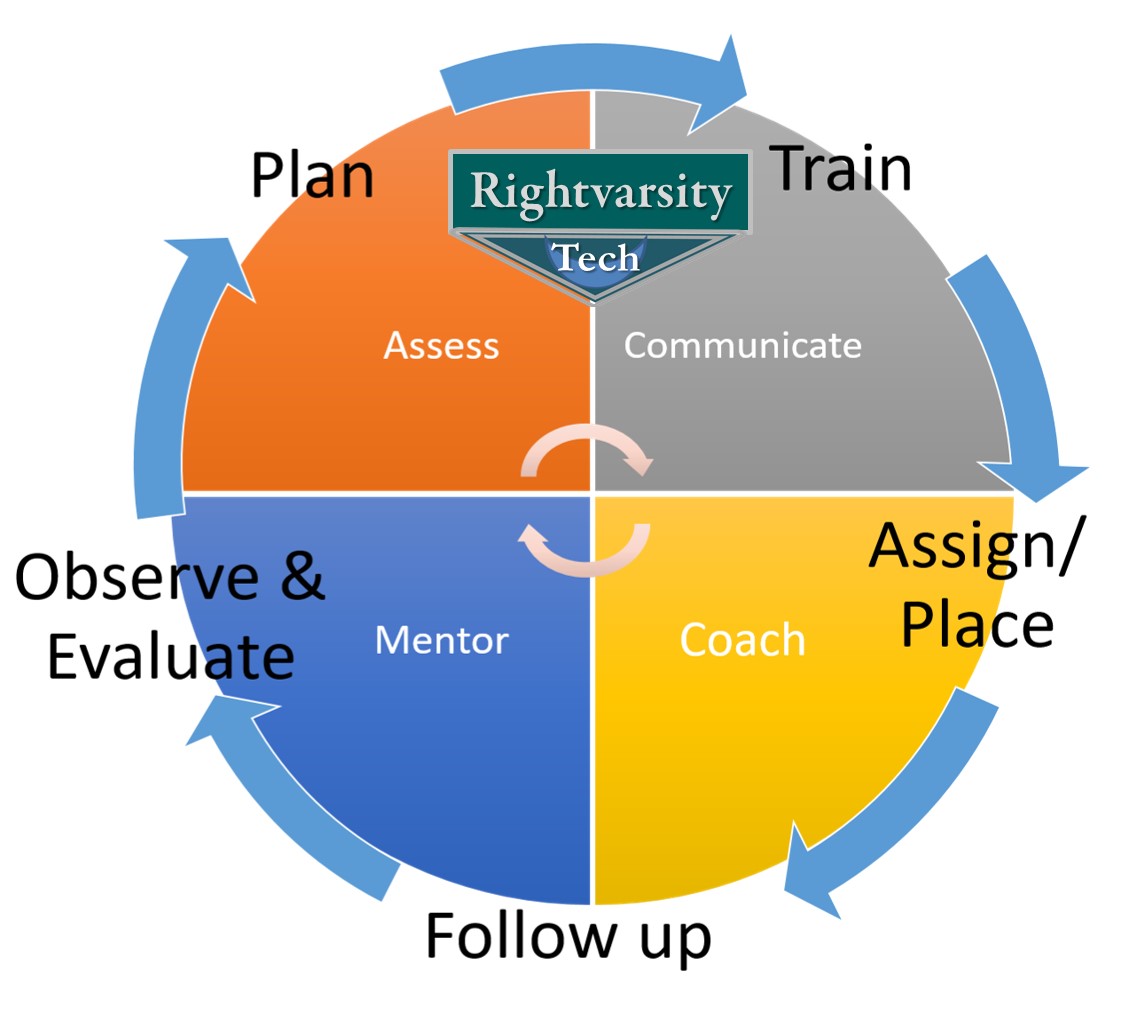


Our integrated approach is a formative process that requires continuous assessment, communication, coaching, and mentoring of the participants at each point in the skills development cycle.
Assess and Plan: During the intake process, we assess the participants to determine their unique strengths and challenges. We work with the participants to plan details of their career paths along with the target skills/role expectations, graduation timeline and the performance evaluation rubrics. Their program graduation timeline is based on initial skills and academic background.
Train/Re-train for Improvement: Some of the participants might be learning new skills in a brand new career path of their choice. Some individuals not doing very well in their role or they might lacking in certain skills. They can be trained (or re-trained if they had received similar training in the past.) The success of the workforce immersion program is driven by the quality of training that the participants receive in the classroom and on the job. The training may also include job search and interview skills.
Identify and Assign Roles: We place the participants with a few employers that have indicated interest in hiring our program participants as apprentice. All apprentice get task assignments within their role expectations. The employers have a big role to play in determining where and who to plug into the competitive positions that are available for the success of the capacity building program. Being in the Silicon Valley, we have an opportunity to place our participants at companies like LinkedIn, Facebook, Google, Microsoft, Twitter, Square and other top tech companies as well as local small to medium businesses and government offices in the area.
Coach/Mentor: We provide mentoring, coaching and/or other supports throughout the program.
Observe, Measure and Analyze: All participants provide status report every month. In addition, we prepare generic skills inventory and performance evaluation instrument using a standard list of questions. The best practice is to observe/shadow each staff at least once every quarter. A red flag in an individual’s monthly status report may also trigger an impromptu observation. Note that the monthly status report alone is not a valid instrument for measuring the employee performance.
Follow Up: To ensure the success of the program, we provide follow-up services, including counseling regarding the workplace, for not less than 3 months after the first day of full employment. If it is observed that an individual is not doing well in their role or is lacking in necessary skills, they might need to be re-trained. It could also be that the individual was not the best fit for their position or career path they chose. The cycle continues.